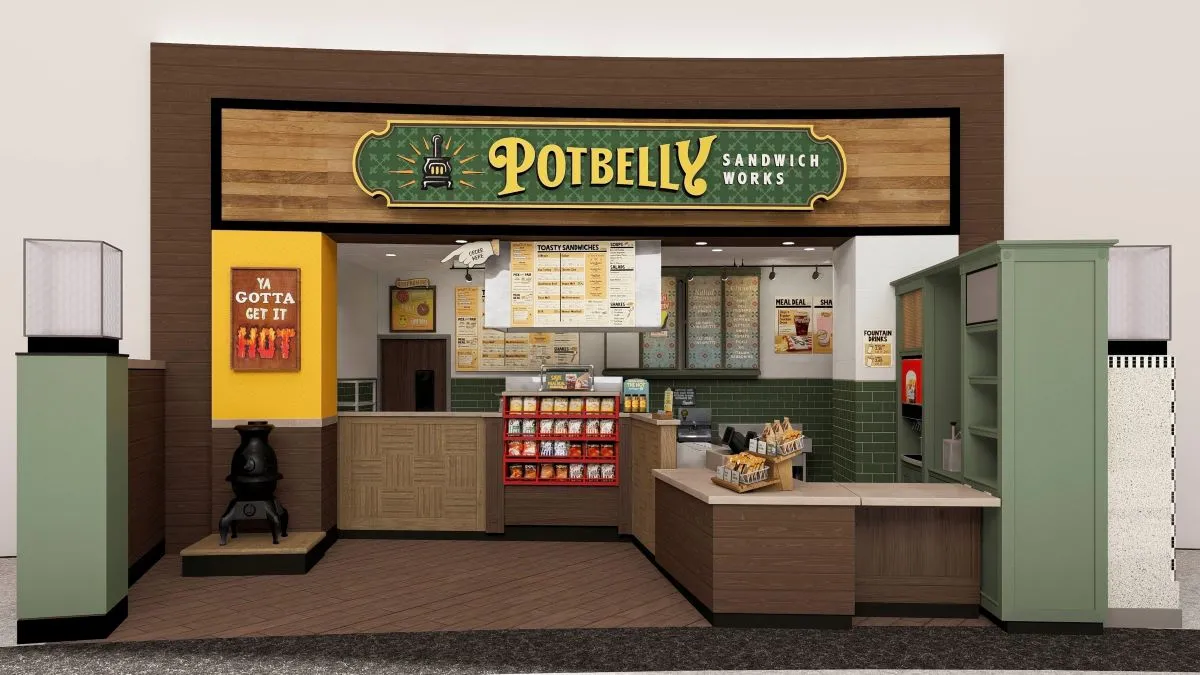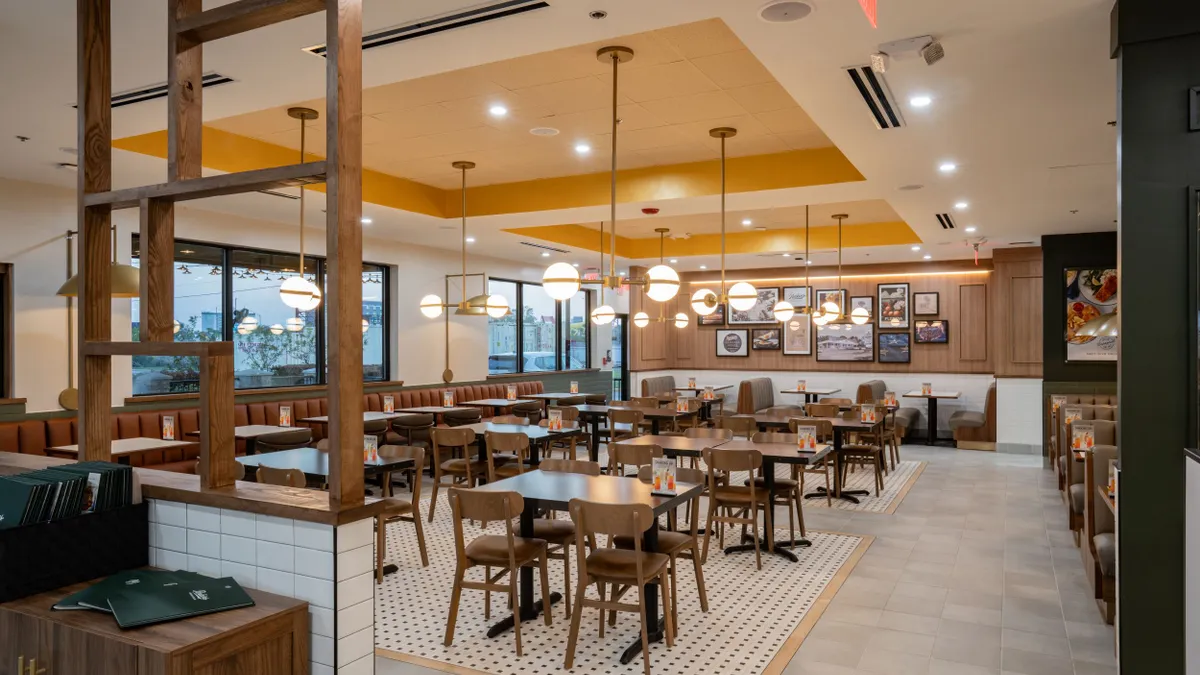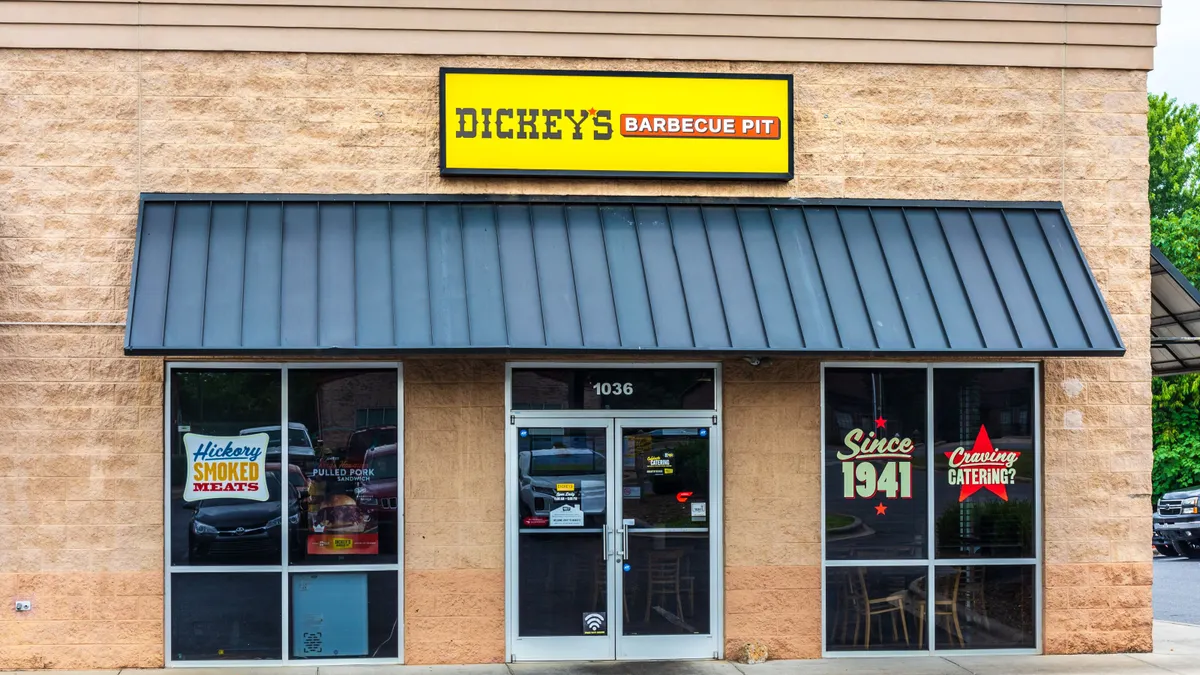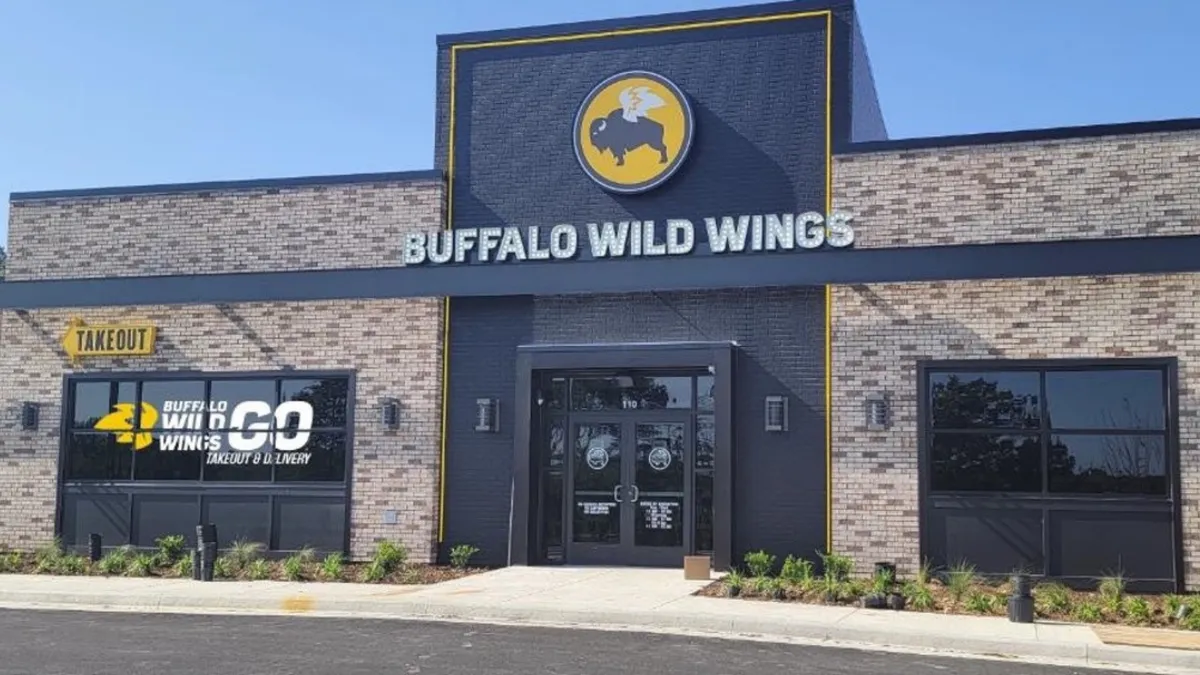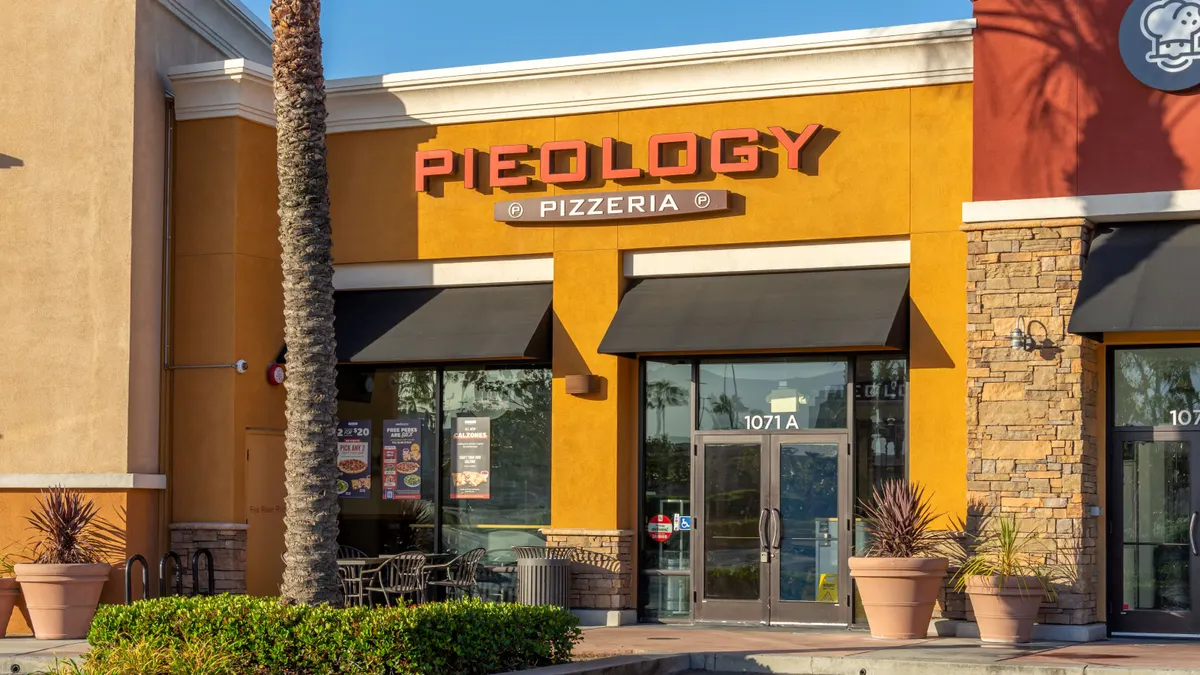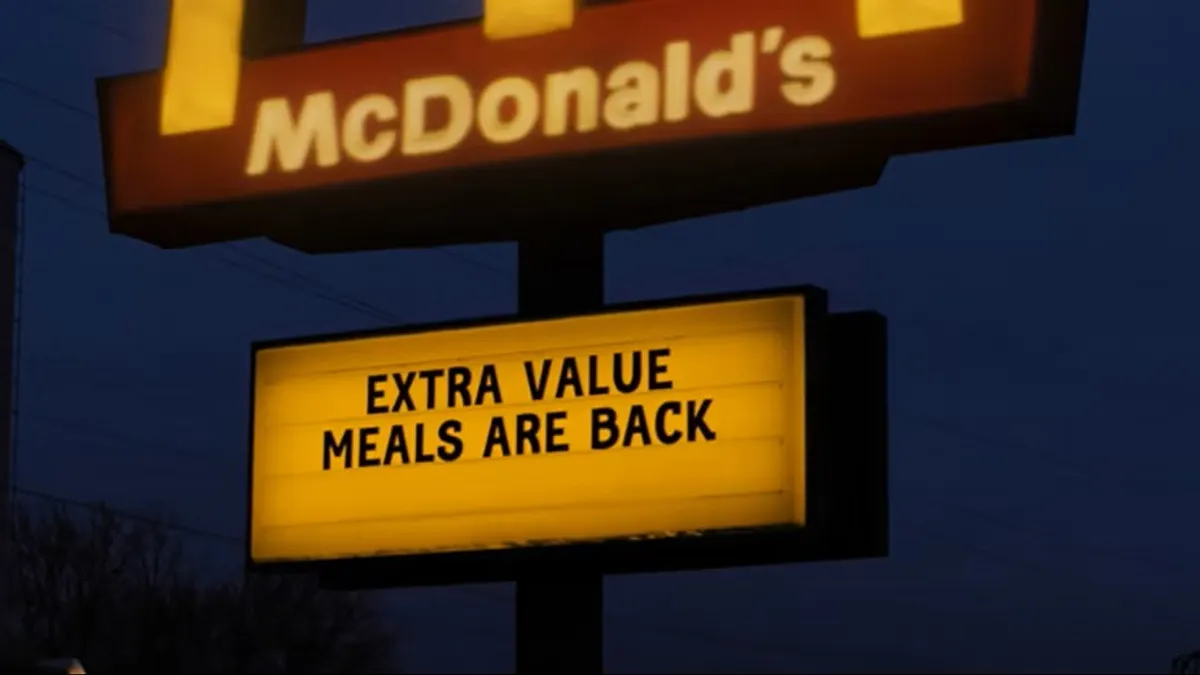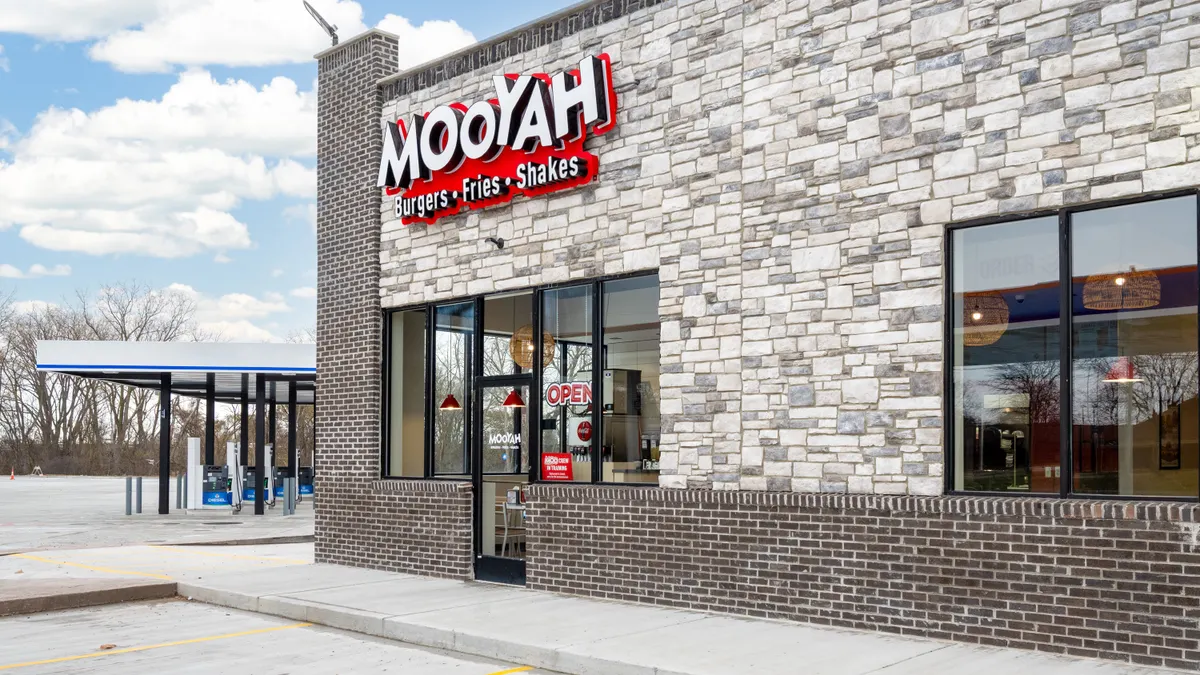Potbelly has developed a tool to help new and existing franchisees fight inflation: a smaller store design.
Its new prototype, which includes design elements like a customized-drink station and pickup shelves, is 1,800 square feet — 500 square feet smaller than its traditional shop. These shops are faster to build than traditional ones, and cheaper to maintain as well, said CEO Bob Wright.
“Franchisees and some other brands have really struggled to offset … inflation,” Wright said in an interview. “Our job with this prototype was to try to help figure out what to do about that inflation. We think we can offset a lot of that. Obviously, a smaller shop is cheaper to build.”
The first of these locations opened in Arkansas in May, and the bulk of new units set to open this year will have elements of the new prototype or the full design. At the end of Q1, the chain had over 640 shops open and committed, Wright said. With 427 currently in operation as of March 31, that means over 200 future shops will likely have this new design in the foreseeable future.
Potbelly has about 30 units in various stages of development and another 10 in early stages that could open in late 2024 or early 2025, Wright said during the company’s Q1 2024 earnings call. The new prototype will help it reach its goal of having 2,000 units in the U.S.
“We can accelerate growth, and that’s what the franchisee wants and that’s what we want,” Wright said. “[Franchisees] are very excited about it. They see the things that matter the most to them: brand differentiation, brand distinction, efficient and faster real estate decisions.”
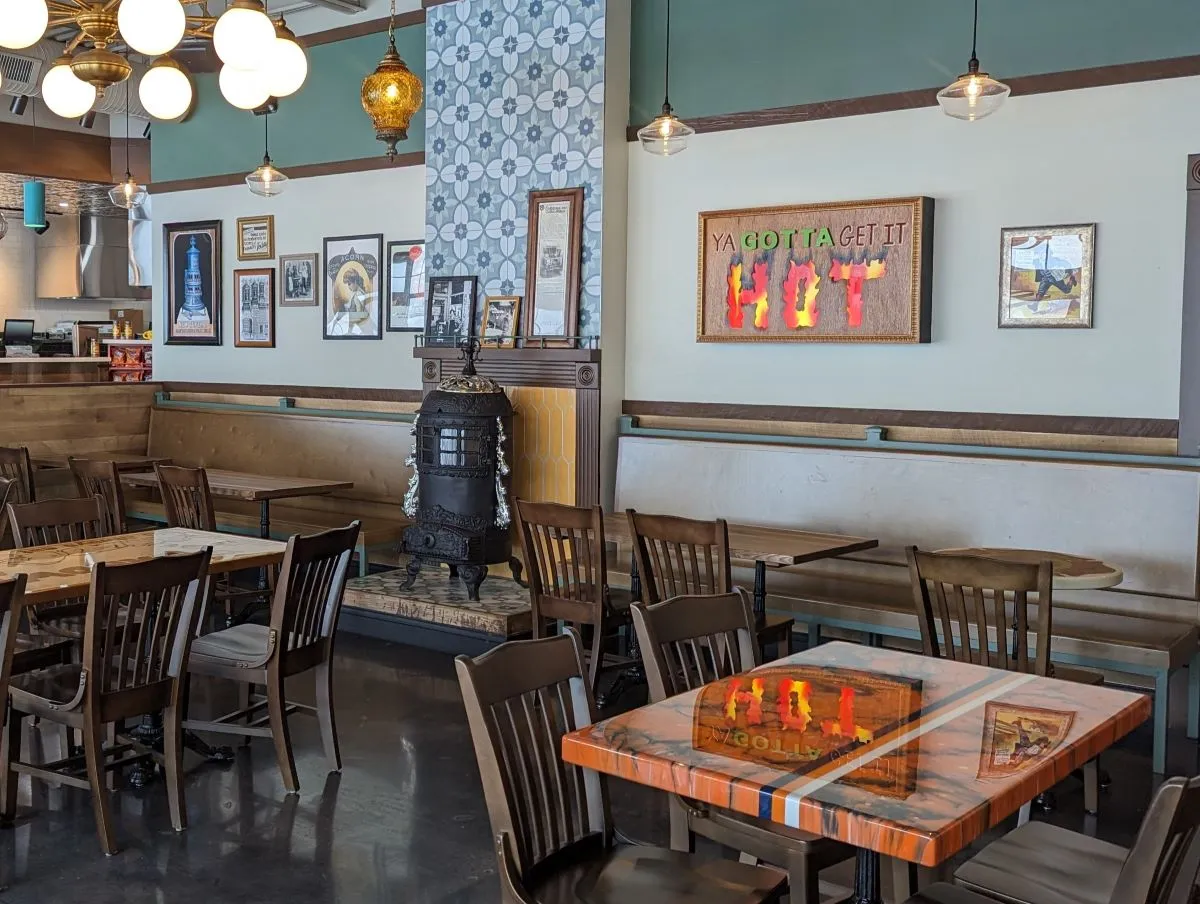
The benefits of a smaller design
Chains are turning to smaller format stores to reduce construction costs for franchisees, accelerate development, introduce more flexibility with real estate and enter markets that could not support larger stores.
Perkins will open two different small-format stores later this year, a full-service store up to 3,500 square feet and a fast casual restaurant of about 1,500 square feet. Other chains like Panera, Sweetgreen and Dunkin’ have been deploying small digital-only stores without dining rooms.
One of Potbelly’s key strategies right now is boosting its franchise development, which explains why it put so much time and effort into improving the design. The average investment to build a traditional shop is $650,000, which yields an average unit volume of $1.3 million, a two-to-one investment ratio that already makes Potbelly attractive, Wright said.
Reducing occupancy costs, improving revenue and boosting profitability helps operators improve their overall financial performance, Wright said. That leads franchisees to feel confident about building out the rest of their territories.
The design is flexible and is more like a “kit of parts,” Wright said, meaning that franchisees have the option to fit this prototype into different types of real estate.
“[The prototype] opens up much more potential real estate,” he said.
It also takes less time to build. The restaurants take about 11 to 12 months to build after signing a development agreement, compared to the industry standard of 12 to 18 months.
“There’s no silver bullet in terms of cost extraction, but there are certainly a lot of places to look for efficiency,” Wright said.
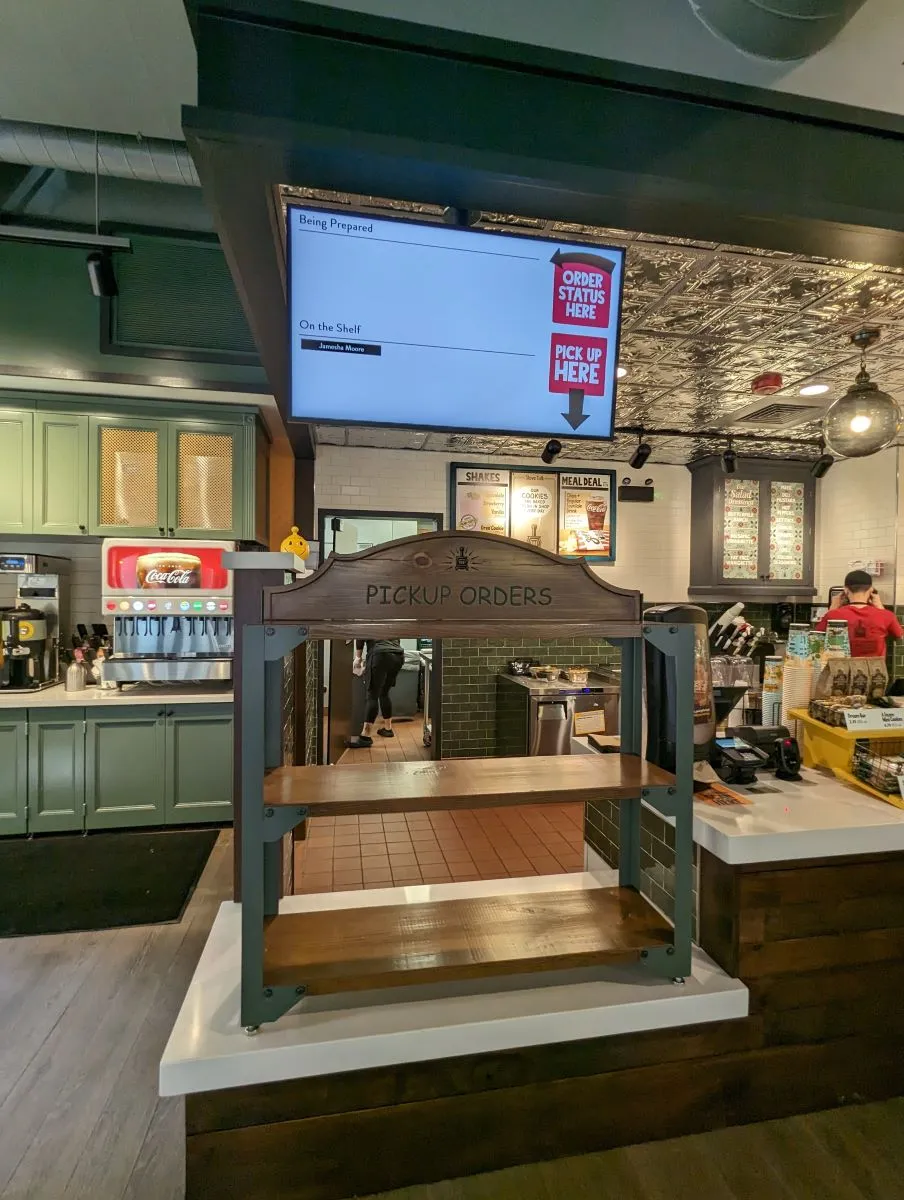
Potbelly’s design strategy
Over the past three years, Potbelly revised restaurant operations, how it services its customers and its digital assets. The company, for example, added Potbelly Digital Kitchens to better service digital orders off the back line — an important move considering digital now makes up about 40% of sales.
Potbelly did a lot of work with its labor model and the placement of its associates during rush and post-rush periods. It has found ways to be more efficient with online orders and looked at the capacity of its equipment and its dining room, Wright said.
“The work on the prototype is essentially bringing all that together,” Wright said. “We really did want to evolve the shop, but not completely revolutionize everything.”
Potbelly hired a design firm to develop the new stores. Although this was a novel format for the company, the firm incorporated lessons from the company’s traditional stores. For example, management knew from its capacity studies that the shop could be smaller and have a little less dining space.
“We also knew that our dining room was incredibly important to the shop experience,” Wright said.
Another element it incorporated into the design is the Potbelly Digital Kitchen, which originally retooled a catering prep line into one that serviced online orders. The chain never had a chance to build that particular makeline from scratch in its previous units. In the new stores, Potbelly has repositioned various equipment, like a cooler, and all of the items that would be needed to create a more streamlined experience.
For customers, the digital experience is more consistent in the new designs. While placement of pickup shelves in the company’s current crop of stores vary by location, the new design has them in the same location, near the drink station. Staff members no longer have to walk across the restaurant to place pickup orders on a shelf, Wright said. The pickup shelves are also within sight of the service line, so if a customer needs something, staff can address their needs better, he said.
There is also clear digital signage that shows the progress of orders, he said.
The drink station situated next to the pickup area looks like a piece of furniture, Wright said, with light green tones and cabinets.
The chain also will continue to provide touches like handmade tables and special artwork that fits each shop’s neighborhood.
Potbelly has a facility in Chicago where it manufactures a lot of elements for restaurants, including tabletops, chairs and art frames. The company will recycle frames for its in-store artwork. It also will build its pickup shelves instead of importing them, which can help save costs.
“You’re certainly going to recognize that you’re in a Potbelly as a customer, but you’re not going to feel like you’re in a cookie cutter [location],” he said.



